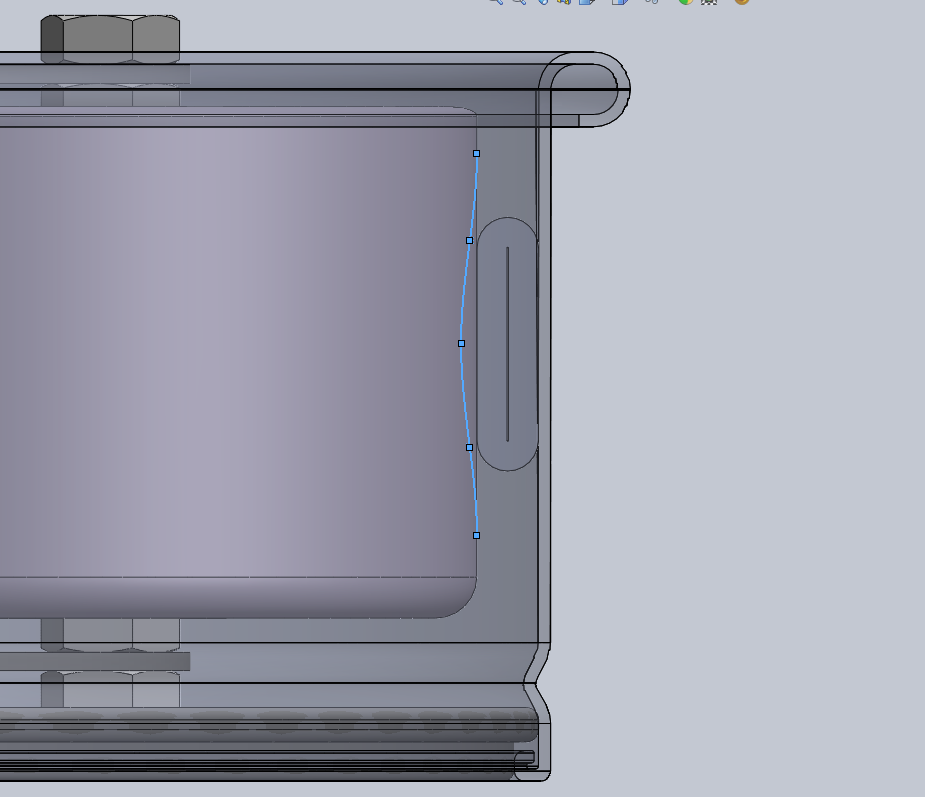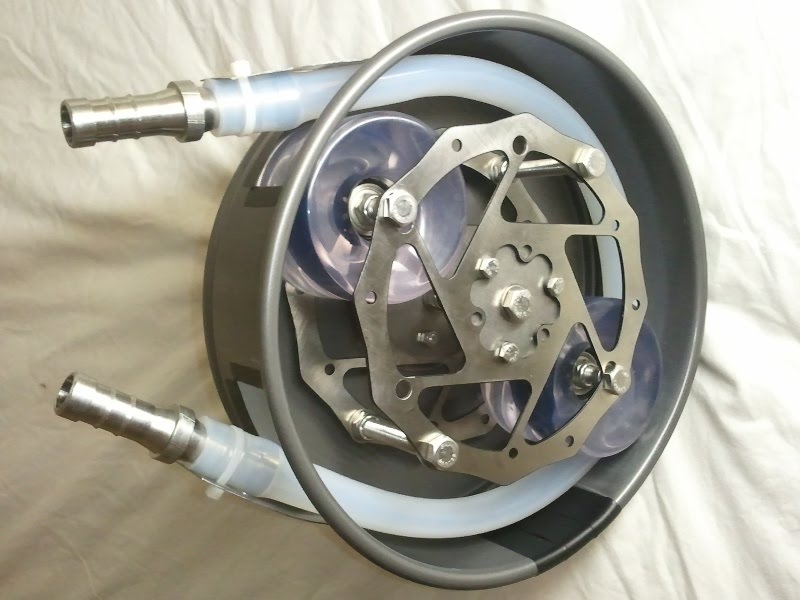TheFlyingBeer
Well-Known Member
WOW! This is an awesome build!! Going to look up parts now! Where did you find the 2 piece metal hose clamps?
I think you might be referring to the 3/4" Triclamp to 1/2" tube adapters, they were purchased from eBay and can be rather hard to find. 1" triclamps are more common. A stainless hose barb coupler or other fitting could also be used. The idea here is that you can tighten down the tube so it doesn't slip in or out of the pump but it won't compress the actually tubing.
Sweet build man !!!
I was just thinking. If a kernel of grain or a hop particle got caught under the wheel it might get smashed in to the tubing causing some sanitation issues or premature wear on the tubing.
maybe that's why the dude in the youtube video had them spring loaded?
With the slots set in the brake discs I can change the amount of occlusion:

Less occlusion = longer tube life and less chance of wear from particles (grains) but less performance. I will have to settle on an appropriate amount of occlusion so the pumps prime well but maintain long tube life. I think the springs might be helpful for dealing with out of center tolerances and maintaining a constant pressure on the hose.


 (sorry couldn't resist)
(sorry couldn't resist)





